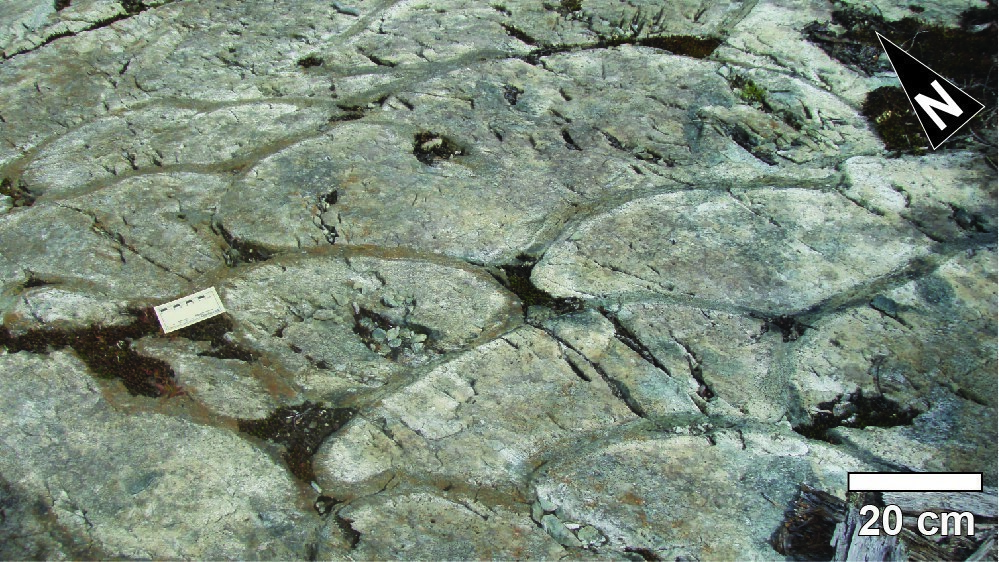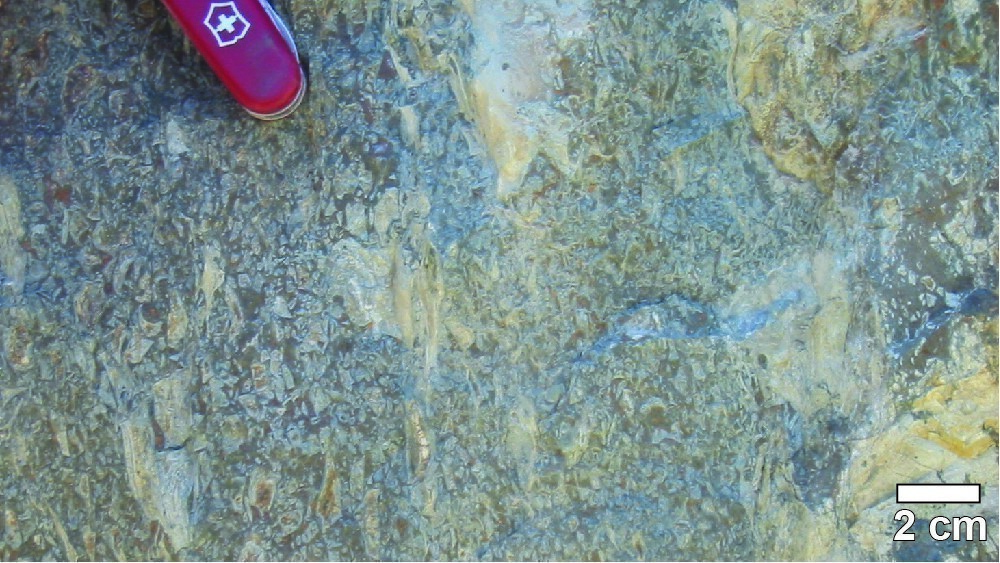
| Author: | Leclerc et al., 2011 |
| Age: | Neoarchean |
| Reference section: | Good reference outcrops are accessible on Road 167, along David Creek, at the south entrance to the town of Chibougamau (UTM NAD 83, zone 18: 543695 mE, 5527426 mN) |
| Type area: | Area from David Lake (NTS sheet 32G16) to the east of Roberge Lake (sheet 32H13), north of Chibougamau Lake |
| Geological province: | Superior Province |
| Geological subdivision: | Abitibi Subprovince |
| Lithology: | Mafic volcanic rocks |
| Type: | Lithostratigraphic |
| Rank: | Member |
| Status: | Formal |
| Use: | Active |
- Roy Group
-
- Bordeleau Formation
- Ruisseau Dalime Formation
- Scorpion Formation
- Phooey Member
- Blondeau Formation
- Bruneau Formation
- Waconichi Formation
- Allard Member
- Scott Member
- Deux Orignaux Member
- Winchester Member
- Lemoine Member
- Portage Member
- Lacs Member
- Îles Member
- Coyote Member
- Chevrier Member
- Queylus Member
- Andy Member
- Obatogamau Formation
- Pichamobi Member
- Wachigabau Member
- David Member
Background
The David Member (Leclerc et al., 2011) refers to massive, pillowed and brecciated aphyric andesitic basalts and andesites (nAdd1) of the upper Obatogamau Formation, north of the Lac Doré Intrusive Suite. It originally corresponded to the lower division of the former Gilman Formation (Leclerc et al., 2008).
Description
David Member 1 (nAdd1): Andesitic Basalt
Andesitic basalt is typically aphyric, dark green in fresh exposure and medium green in altered surface. Flows can reach a thickness of 60 m (Allard, 1976) and are typically composed of pillowed (~50%) and massive (~25%) mafic volcanic rocks intruded by comagmatic gabbroic sills (~25%). A minor (<1%) brecciated facies is present locally. Flow breccias also form centimetre to metre-thick lenses interbedded with massive and pillowed flows.
Reference outcrops at the southern entrance to the town of Chibougamau expose dark green, locally amygdaloidal, pillow basalts and tiny brecciated horizons containing hyaloclasts (0.5-1 m). Basalts are cut by medium-grained gabbro sills.
David Member 2 (nAdd2): Flow Breccia and Andesitic Hyaloclastite
In the Petit Gilman Lake area south of the town of Chibougamau, lenses of brecciated material are observed over 30 m thick and extend laterally for several hundred metres. They are interbedded with ankeritized chlorite-sericite schist strips of the Lac Sauvage Shear Zone.
Thickness and Distribution
The David Member is generally <1 km thick, but much thicker in the area south of Chibougamau due to tectonic recurrences along numerous reverse shear zones in the Lac Sauvage deformation corridor. Rocks of the David Member extend from northern David Lake (sheet 32G16) to eastern Roberge Lake (sheet 32H13).
Dating
None.
Stratigraphic Relationship(s)
Volcanic rocks at the David Member’s base are cut by rocks of the Lac Doré Intrusive Suite, although primary cross-cutting relationships are generally obscured by deformation (Lac Sauvage Shear Zone, Bordière du Lac Doré Shear Zone; Daigneault and Allard, 1990). The David Member’s summit corresponds to the contact with volcaniclastic rocks of the Waconichi Formation’s Allard Member.
Paleontology
Does not apply.



